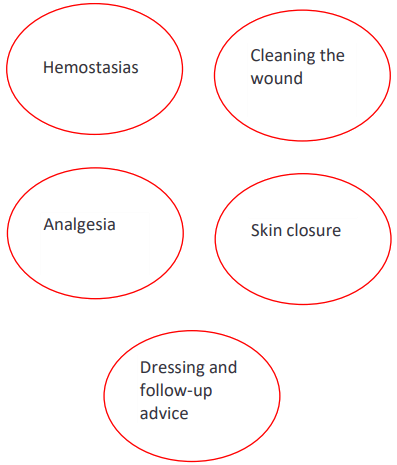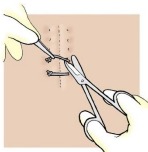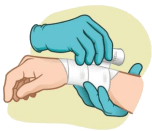5 basic principles for the management of a wound
Wound care is the continued treatment of a wound by creating a favourable environment for healing through both direct and indirect means, as well as preventing skin disintegration.
Introduction
Wound care is the continued treatment of a wound by creating a favourable environment for healing through both direct and indirect means, as well as preventing skin disintegration. Over the course of the care period, the size, depth, severity, and location of the wound influence proper management. You must have a complete understanding of skin structure, wound healing, and the type of wound you are caring for in order to give appropriate wound care. It’s also essential to know the obstacles to proper wound healing. For the best potential patient outcomes, evidence based wound treatment knowledge and skills are essential.
Hemostasis
The process of haemostasis is the stopping of bleeding. Haemostasis will occur spontaneously in the majority of wounds. Steps to control bleeding and aid haemostasis may be required in cases of severe vascular injury or laceration. Pressure, elevation, tourniquets, and suturing are some of the alternatives.

Analgesia
Analgesia will make the wound closure more humane and easier. The most common kind of analgesia is infiltration with a local anaesthetic, with regular systemic analgesia (such as paracetamol) given as a supplementary. The highest amount of lidocaine allowed per kilogramme is 3 mg/kg, with the addition of adrenaline allowing for up to 7 mg/kg (a 1% solution equals 10 mg/ml).

Cleaning the wound
- Cleaning wounds is critical for preventing infection and facilitating recovery.
- Apply antiseptic to the skin around the wound. Keep alcohol and detergents outside the wound.
- Remove any foreign bodies from the wound manually to decontaminate it.
- When possible, eliminate any damaged tissue.
- Using saline, irrigate the wound.
- Low-pressure irrigation is sufficient if there is no evident damage.
- Antibiotics for wounds with a high risk of infection or symptoms of infection (follow local antibiotic guidelines)
- Foreign bodies, heavily contaminated wounds, bites (including human bites), puncture wounds, and open fractures are all risk factors for wound infection.
Skin closure
The edges of the wound can be carefully treated to promote wound healing. To promote wound healing and avoid the production of unwanted scars, it is frequently required to close gaping skin wounds. Staples, sutures, and skin and tissue adhesives are all common means of skin closure. Suture placement is the best skin closure technique for wounds larger than 5cm in length, while the other procedures are only appropriate for smaller wounds.

Dressing the Wound and Follow-Up
Infection and contamination will be reduced if the wound is dressed appropriately. When dressing a non-infected laceration, use a non-adherent material first (such as gauze), then an absorbent material to attract any wound exudate, and then soft gauze tape to put the dressing in place. Tetanus prophylaxis is recommended for anyone who is not up to date on their tetanus immunisation (or is uncertain).


